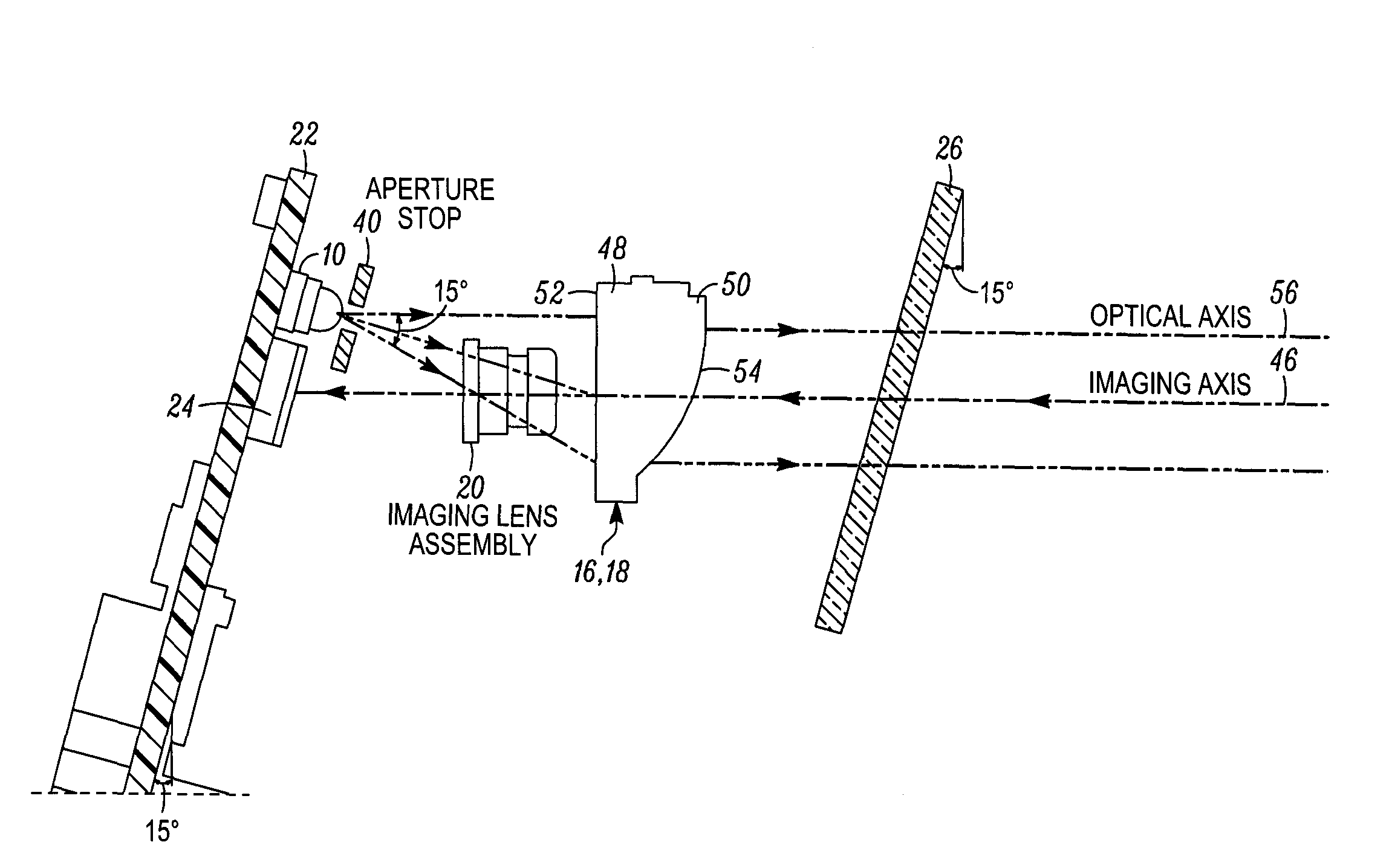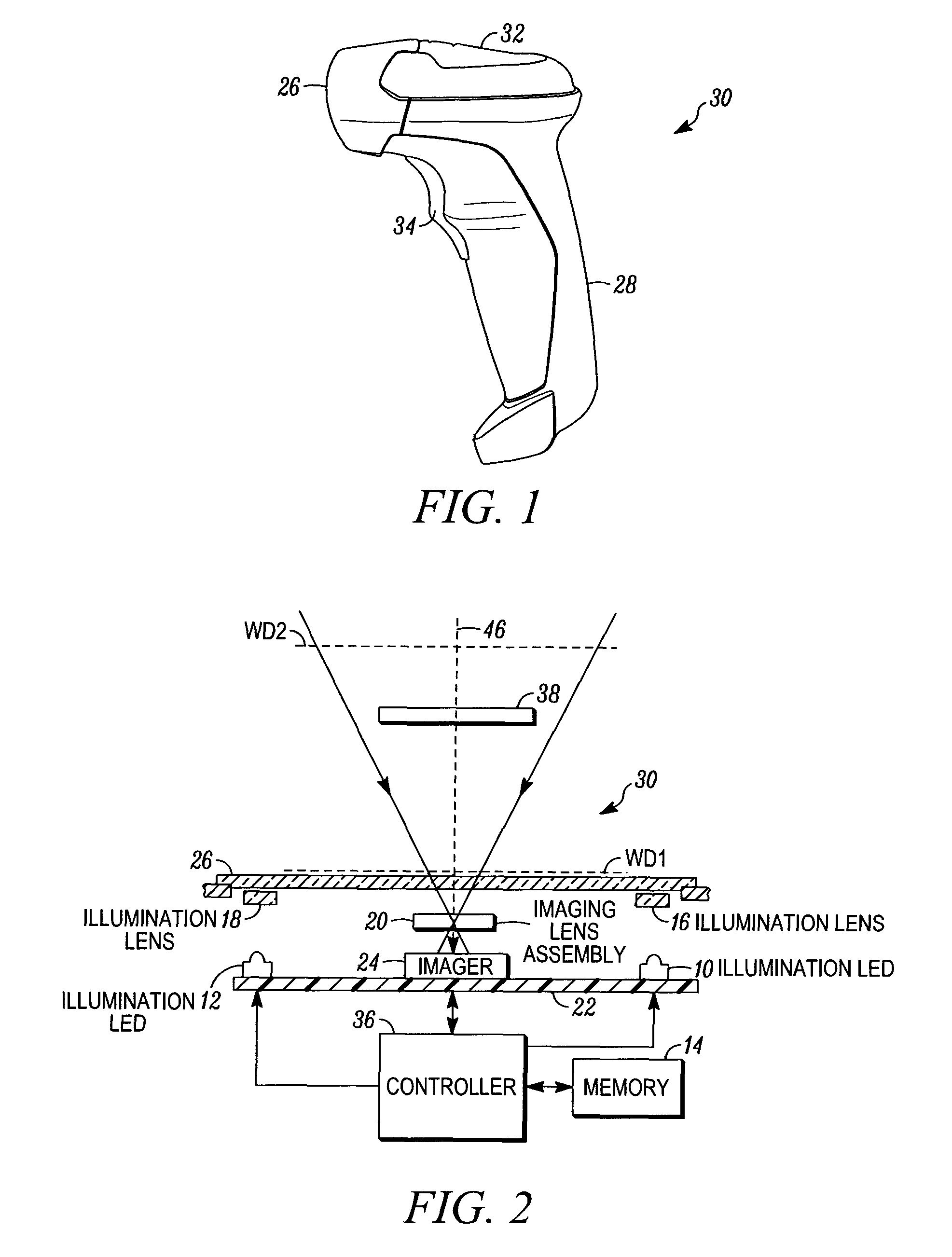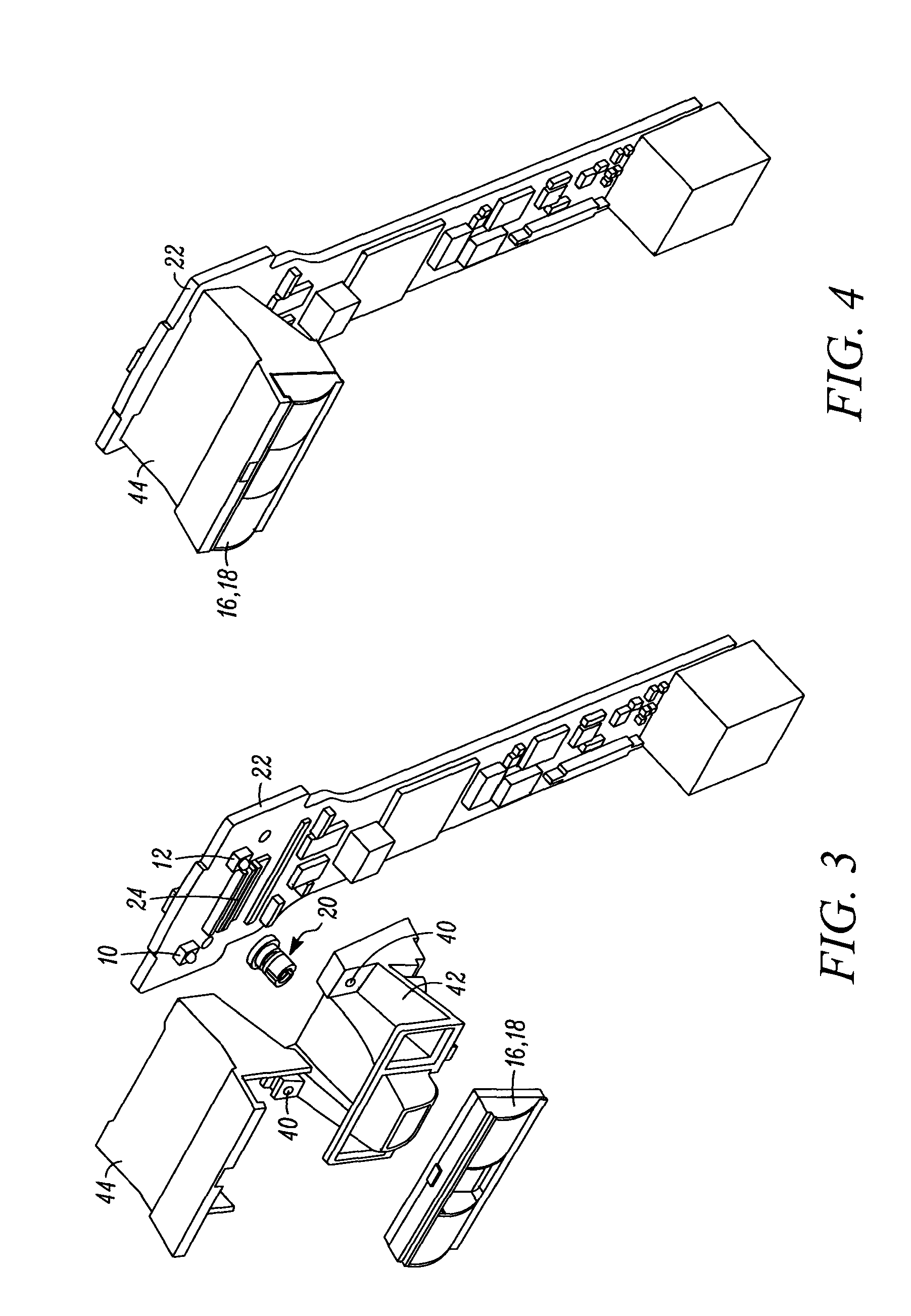Arrangement for and method of generating uniform distributed illumination pattern for imaging reader
an imaging reader and distribution pattern technology, applied in the direction of instruments, photoelectric discharge tubes, sensing by electromagnetic radiation, etc., can solve the problems of poor coupling efficiency poor use of single led and single cylindrical lens, etc., to improve the coupling efficiency between light source and optical component, improve light throughput, and enhance reading performance
- Summary
- Abstract
- Description
- Claims
- Application Information
AI Technical Summary
Benefits of technology
Problems solved by technology
Method used
Image
Examples
Embodiment Construction
[0024]Reference numeral 30 in FIG. 1 generally identifies an ergonomic imaging reader configured as a gun-shaped housing having an upper barrel or body 32 and a lower handle 28 tilted rearwardly away from the body 32 at an angle of inclination, for example, fifteen degrees, relative to the vertical. A window 26 is located adjacent the front or nose of the body 32 and is preferably also tilted at an angle of inclination, for example, fifteen degrees, as best shown in FIG. 5, relative to the vertical. The imaging reader 30 is held in an operator's hand and used in a handheld mode in which a trigger 34 is manually depressed to initiate imaging of target indicia, especially one-dimensional symbols, to be read in a range of working distances relative to the window 26. Housings of other configurations can also be employed.
[0025]As schematically shown in FIG. 2, an imaging system or module includes an imager 24 mounted on a printed circuit board (PCB) 22 in the reader 30. The PCB 22 is mou...
PUM
 Login to View More
Login to View More Abstract
Description
Claims
Application Information
 Login to View More
Login to View More - R&D
- Intellectual Property
- Life Sciences
- Materials
- Tech Scout
- Unparalleled Data Quality
- Higher Quality Content
- 60% Fewer Hallucinations
Browse by: Latest US Patents, China's latest patents, Technical Efficacy Thesaurus, Application Domain, Technology Topic, Popular Technical Reports.
© 2025 PatSnap. All rights reserved.Legal|Privacy policy|Modern Slavery Act Transparency Statement|Sitemap|About US| Contact US: help@patsnap.com



